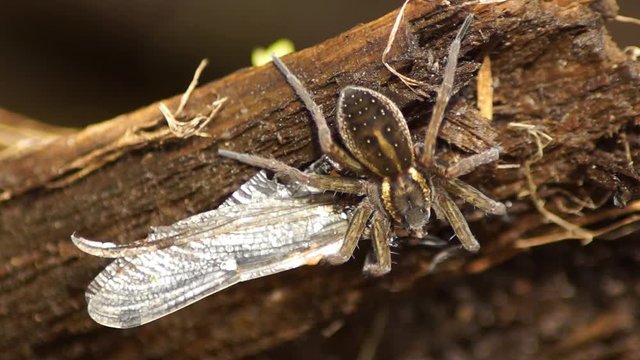attention Australian spider, flipping
For a tiny Australian spider, flipping is the secret to dealing with an ant twice as big.
https://t4.ftcdn.net/jpg/02/71/59/53/360_F_271595395_iRhubRUbavEFKxWyK7e1TF7Uz2Yo0cJZ.jpg
"This acrobatic act is simply fascinating. Personally, I've never seen this type of hunting," said Paula Cushing, an evolutionary biologist and curator of invertebrates at the Denver Museum of Nature and Science. He was not involved in the study.
Alfonso Aceves-Aparicio, a behavioral ecologist at the Max Planck Institute for Chemical Ecology in Jena, Germany, stumbled across these raging spiders one night on his way home. Aceves-Aparicio, then a PhD student at Macquarie University in Sydney recalls. “But then I saw the ant floating and I thought, woah, there’s something going on here.”
Aceves-Aparicio borrowed a high-speed camera to take a closer look at what the spiders were doing. By slowing down, he and his colleagues were able to see that the spiders were actually preying on the ants in completely unknown ways.
Most ant-hunting spiders use webs or sneak up on their prey from behind to minimize risk. But despite being smaller than their prey, Aceves-Aparicio spiders face the banded sugar ants (Camponotus consobrinus) head-on. As the ants moved around the tree, each spider positioned itself where it looked at the ants. When a person approaches, the spider rolls over its prey. Once in the air, the spider attaches a silk thread to the ant. This single tethering action—performed in milliseconds—determines whether the search will succeed or not. If the thread gets stuck, the spider will fly around the ant, subtly surrounding it with more silk, then tug it off its feet, pulling it away and eating it.
To the astonishment of Aceves-Aparicio and his colleagues,was the technique’s effectiveness. Predators like lions and wolves tend to miss around 50 percent of their intended targets. The success rate of the 60 spider hunts that the researchers filmed was a staggering 85 percent.


Comments